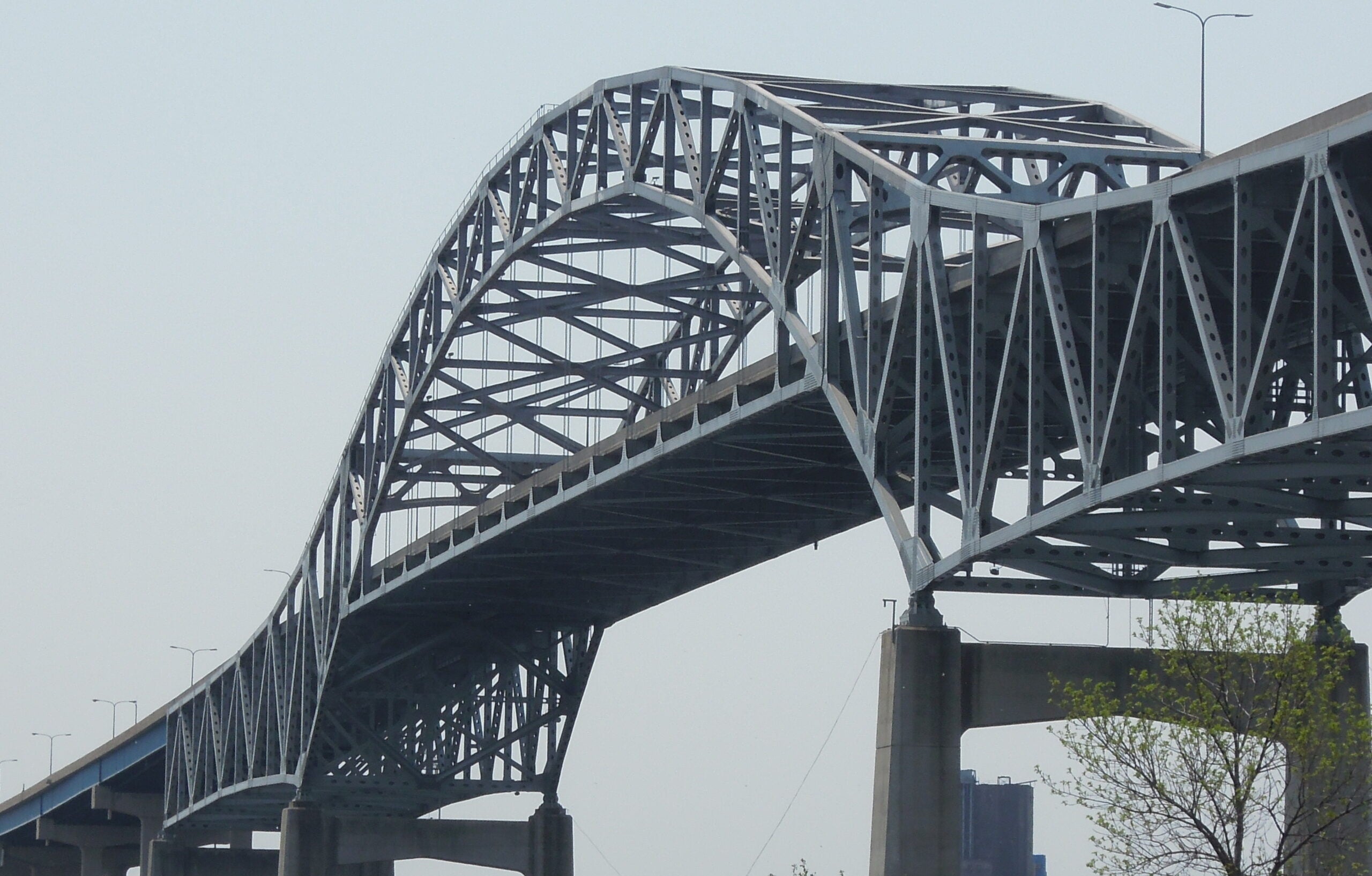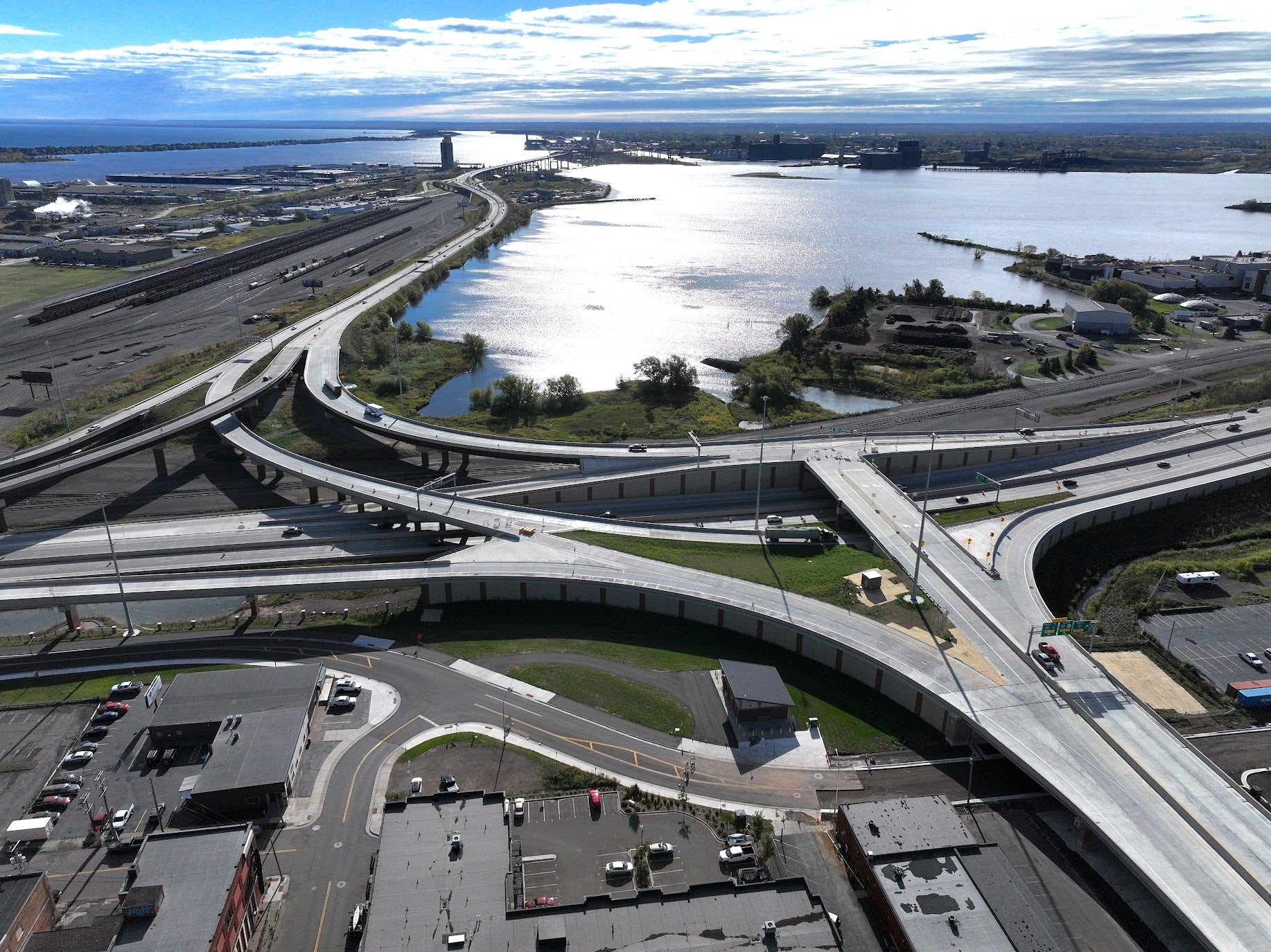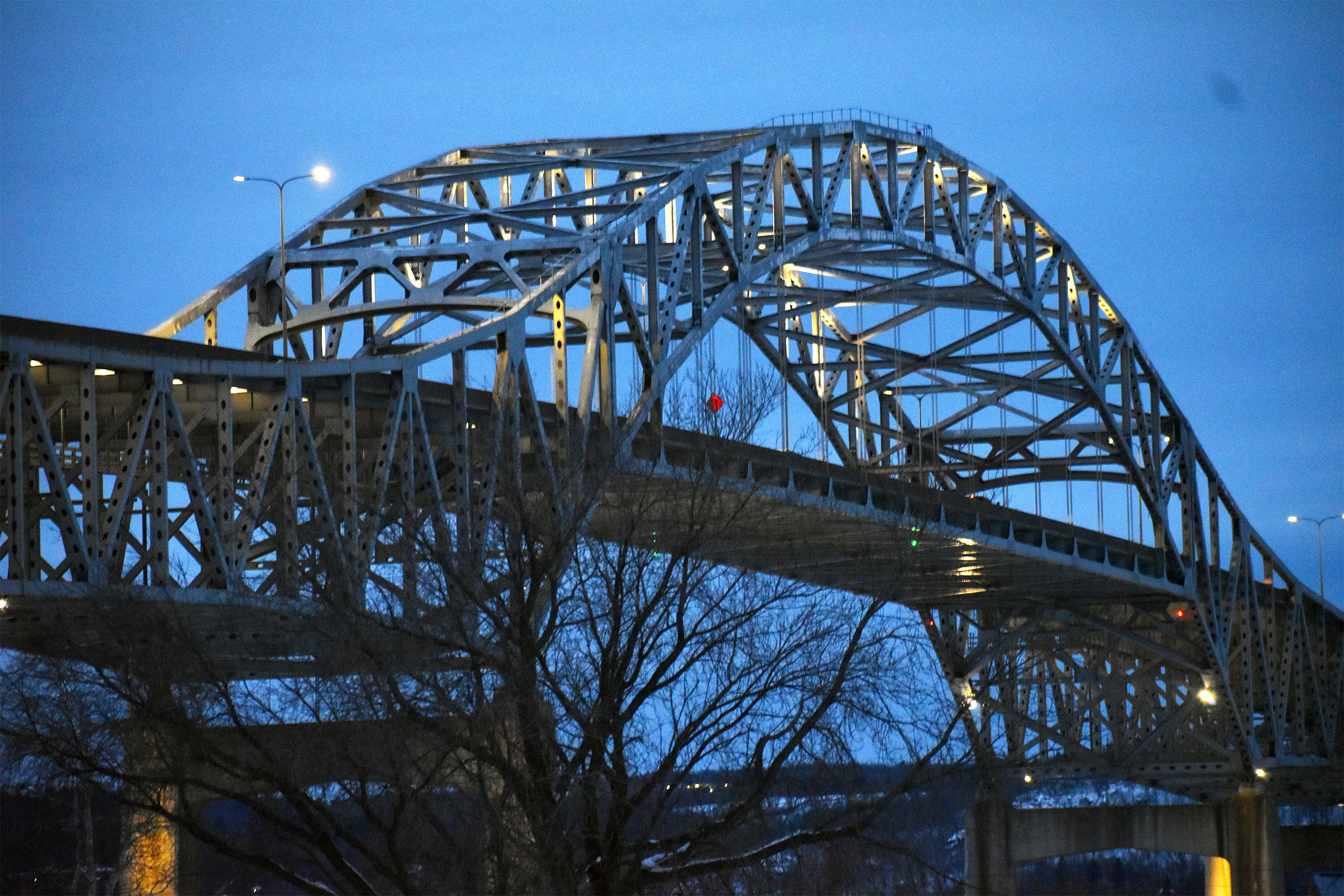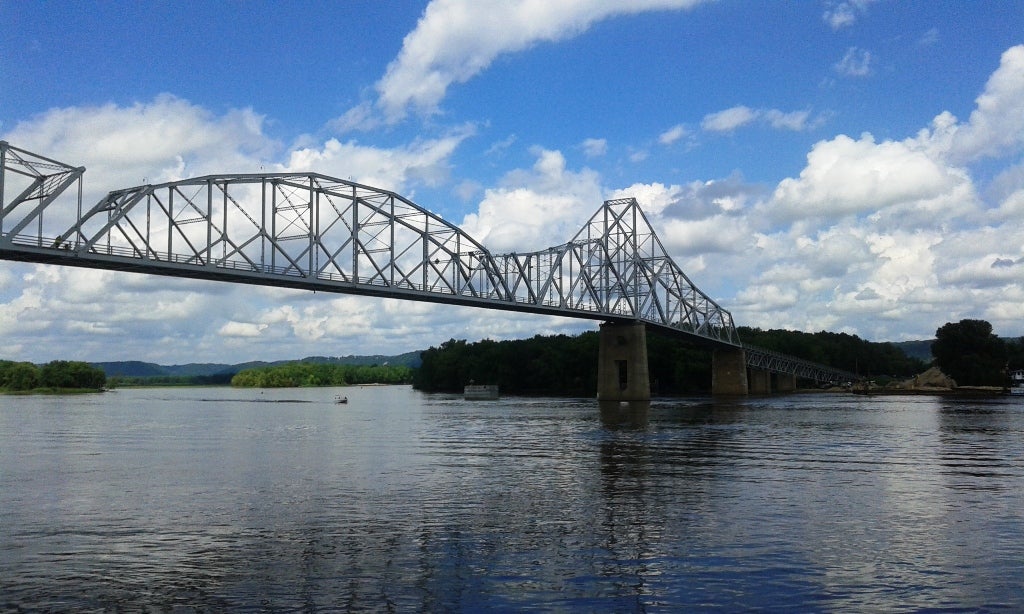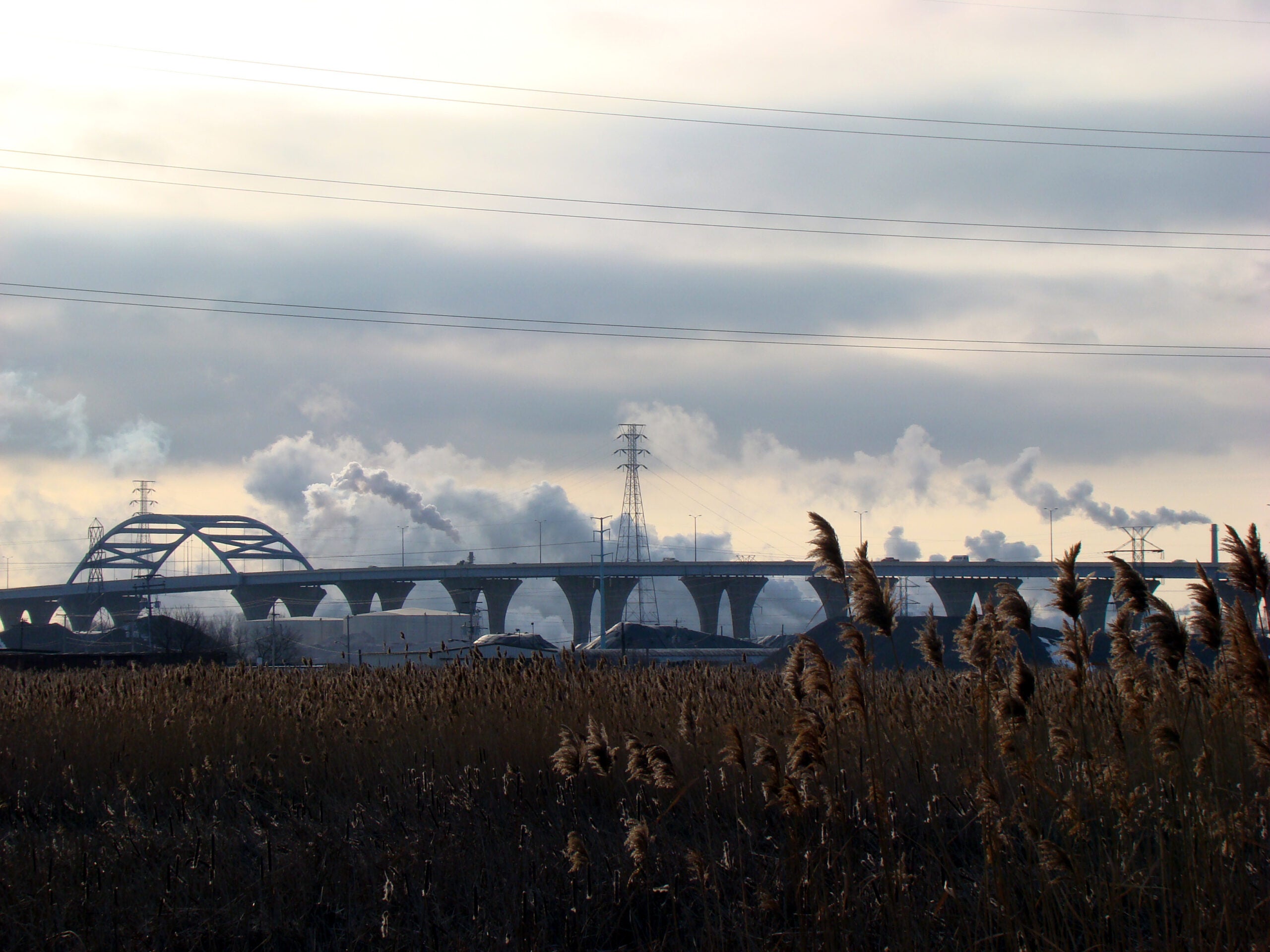New recommendations to link the Blatnik Bridge replacement to U.S. Highway 53 could make the trip between Duluth and Superior safer for the more than 30,000 drivers who cross the bridge every day.
Currently, the bridge links to a city street, Hammond Avenue, in Superior with an exit ramp to Highway 53. Transportation officials’ new recommendations are due in part to safety concerns as traffic transitions from 55 mph on the bridge to 30 mph on city streets, making the area more prone to crashes.
Transportation officials are recommending four options to connect the bridge to U.S. Highway 53 in Superior, according to Marc Bowker, northwest region planning engineer and project manager for the Wisconsin Department of Transportation. Bowker said those alternatives have the best potential to address safety issues and improve the flow of traffic.
News with a little more humanity
WPR’s “Wisconsin Today” newsletter keeps you connected to the state you love without feeling overwhelmed. No paywall. No agenda. No corporate filter.
“It will be a free flow both onto the bridge and down and off the bridge,” said Bowker. “It would just look like you’re on the same highway coming around the corner.”
Superior Mayor Jim Paine supports connecting the bridge to Highway 53.
“The current main landing on Hammond Avenue is just very dangerous, and it really breaks up a neighborhood and creates real barriers for people,” said Paine.
Transportation officials say a direct connection to Highway 53 would eliminate drivers who have been using N. 5th Street to bypass exiting traffic. Instead, transportation officials would create an interchange that would provide access to Hammond Avenue.
“Exits from that bridge on the landing will allow the bridge to still serve traffic in our business districts,” said Paine.
Bowker also noted that a rail crossing on Hammond Avenue has been known to back up traffic onto the bridge when trains pass.
“That was another concern that was creating some of the potential for crashes up there,” said Bowker.
All proposed alternatives would involve relocating around 10 or fewer homes and businesses, according to Bowker. Paine said they want to make sure homeowners and business owners are included in the process.
“We want to make sure that we are working very closely with anybody that’s facing relocation. We want that to be voluntary, and we want it to be an opportunity for folks,” said Paine. “We don’t want to be kicking people out of property that they want to stay in.”
Transportation officials would like to see a new bridge built closely along its existing alignment because that wouldn’t limit access to boat slips or the waterfront. They also want to accommodate bike and pedestrian paths along the bridge.
The replacement of the 61-year-old bridge is being driven by its deteriorating condition. The bridge has been under load restrictions due to age, rust and corrosion on the bridge’s primary trusses. Even so, transportation officials say regular inspections and maintenance ensure the bridge remains safe. That includes $6.3 million in work being done now through September to extend its life.
President Joe Biden visited Superior in March to tout the $1 trillion bipartisan infrastructure law that is funding repair and replacement of roads and bridges nationwide. Wisconsin and Minnesota transportation officials hope federal funding will pay for most of the estimated $1.8 billion project. The two states are splitting the cost of the replacement with construction slated to begin in 2028.
The Minnesota and Wisconsin Departments of Transportation are currently accepting public comment on proposed alternatives for the Blatnik Bridge project. People can submit comments online on the project’s website.
The two states are hoping to recommend their preferred alternative for public input by January of next year.
Wisconsin Public Radio, © Copyright 2025, Board of Regents of the University of Wisconsin System and Wisconsin Educational Communications Board.

